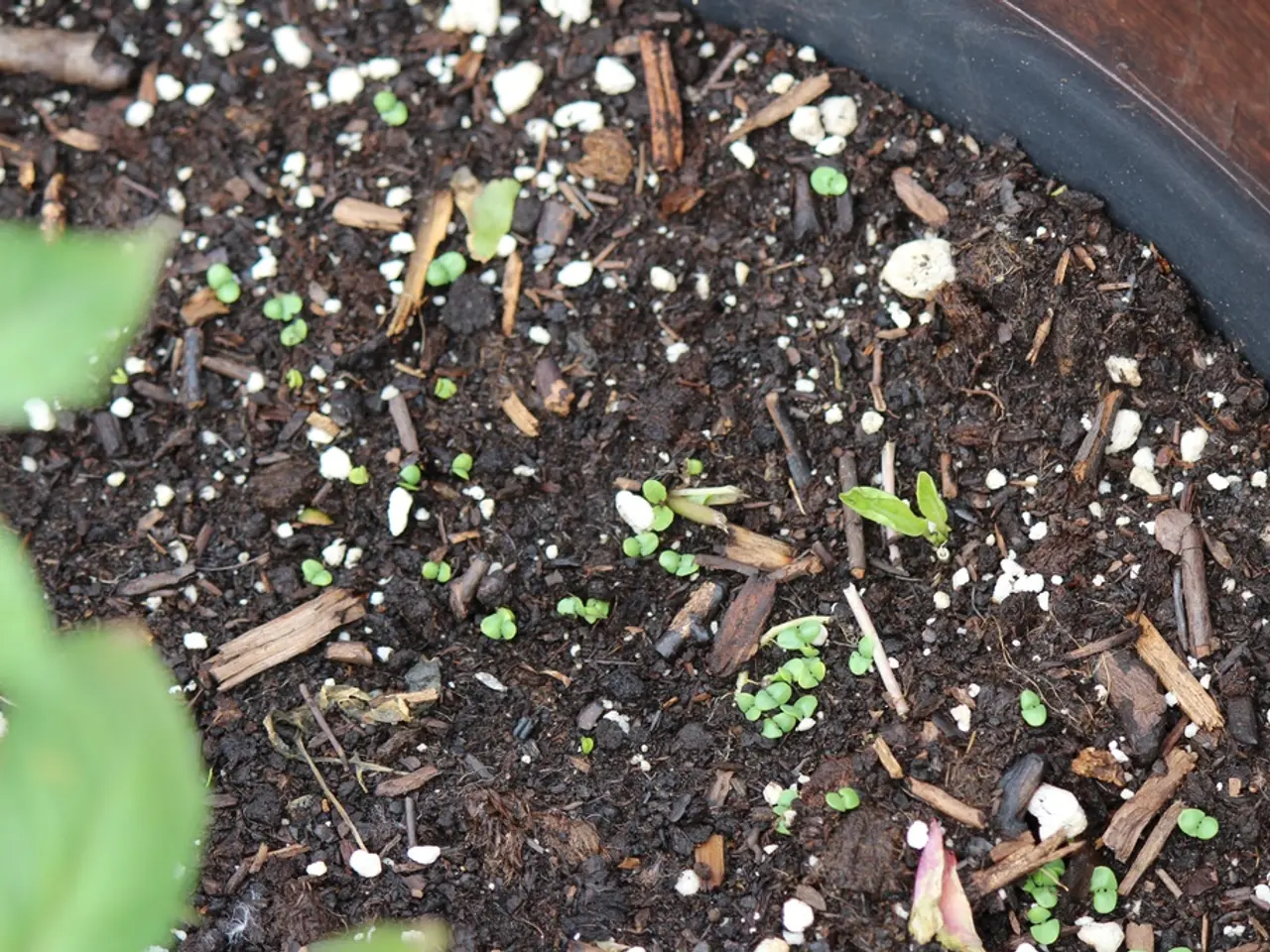"Explore 10 Essential Techniques in Soil Health Assessment and Testing"
In the pursuit of sustainable agriculture, understanding and maintaining healthy soil is crucial. Here are the top 10 essential methods for soil health and soil testing:
- Cover Cropping: Growing specific cover crops, such as legumes, grasses, and brassicas, can help prevent erosion, fix nitrogen biologically, increase organic matter, and support microbial diversity. This technique reduces chemical inputs and improves moisture retention.
- Reduced Tillage / No-Till Farming: Minimizing soil disturbance preserves soil structure, microbial habitat, and organic matter while reducing erosion and compaction.
- Organic Amendments & Compost Application: Adding compost or manure improves soil nutrient content, structure, biological activity, and water retention.
- Crop Rotation and Diversification: Alternating different crops in sequence reduces pest and disease buildup, improves nutrient cycling, and lowers soil degradation.
- Precision Soil Testing and Analysis: Conducting systematic, representative soil sampling and digital or laboratory analysis helps assess pH, nutrient levels, organic matter, moisture, and contaminants. This guides targeted interventions.
- Data Interpretation and Management Decisions: Using test results and digital tools or agronomist advice to develop field-specific fertilization, irrigation, and crop plans that optimize resource use and soil health.
- Fertilizer Application Based on Soil Tests: Applying nutrients only as needed avoids over-fertilization, protects the environment, and maintains soil fertility.
- Maintaining Soil pH in Optimal Range: Regular pH testing and amendments ensure nutrient availability and healthy crop growth.
- Monitoring Soil Biological Activity: Assessing microbial biomass and activity helps track soil health and the effectiveness of organic amendments and crop rotations.
- Use of Digital and IoT Tools: Incorporating satellite imagery, IoT sensors, and apps facilitates real-time soil moisture monitoring, health tracking, and data integration for adaptive management.
Implementation for sustainable agriculture involves planning cover crop species based on climate, soil type, and cropping goals, reducing or eliminating tillage, regularly sampling soil, utilizing portable digital soil testers or laboratory services for comprehensive analysis, interpreting test data with expert advice or digital platforms, adding organic amendments as needed, rotating crops, maintaining soil pH within optimal ranges, monitoring microbial health, and leveraging digital solutions for continuous soil health monitoring and management adaptation.
Soil pH testing is important for understanding soil acidity and alkalinity, as the pH of the soil affects the availability of nutrients to plants. Soil texture analysis helps understand soil composition, which affects water retention, nutrient availability, and plant growth. Organic matter content is key to soil fertility, as it improves soil structure, promotes soil development, and nourishes the soil's microorganisms. Soil testing is essential for assessing nutrient balance, organic matter, and microbial activity.
References:
- National Resource Conservation Service (NRCS). (2020). Cover Crops. Retrieved from www.nrcs.usda.gov/wps/portal/nrcs/main/nrcs/soils/health/organic/cover/
- Soil Health Partnership. (2020). Precision Agriculture. Retrieved from www.soilhealthpartnership.org/precision-agriculture
- Rodale Institute. (2020). Organic Farming. Retrieved from www.rodaleinstitute.org/organic-farming
- United States Department of Agriculture (USDA). (2020). Soil Testing. Retrieved from www.nrcs.usda.gov/wps/portal/nrcs/main/nrcs/soils/health/soiltest/
- Incorporating home-garden practices such as organic composting and cover cropping can support sustainable agriculture by enriching soil composition, promoting microbial diversity, and improving water management.
- To make our lifestyles more eco-friendly, one can embrace sustainable agriculture principles in home-and-garden settings by implementing methods like precision soil testing, fertilizer application based on soil test results, and crop rotation, thereby improving the health of the soil and supporting local plant growth.




